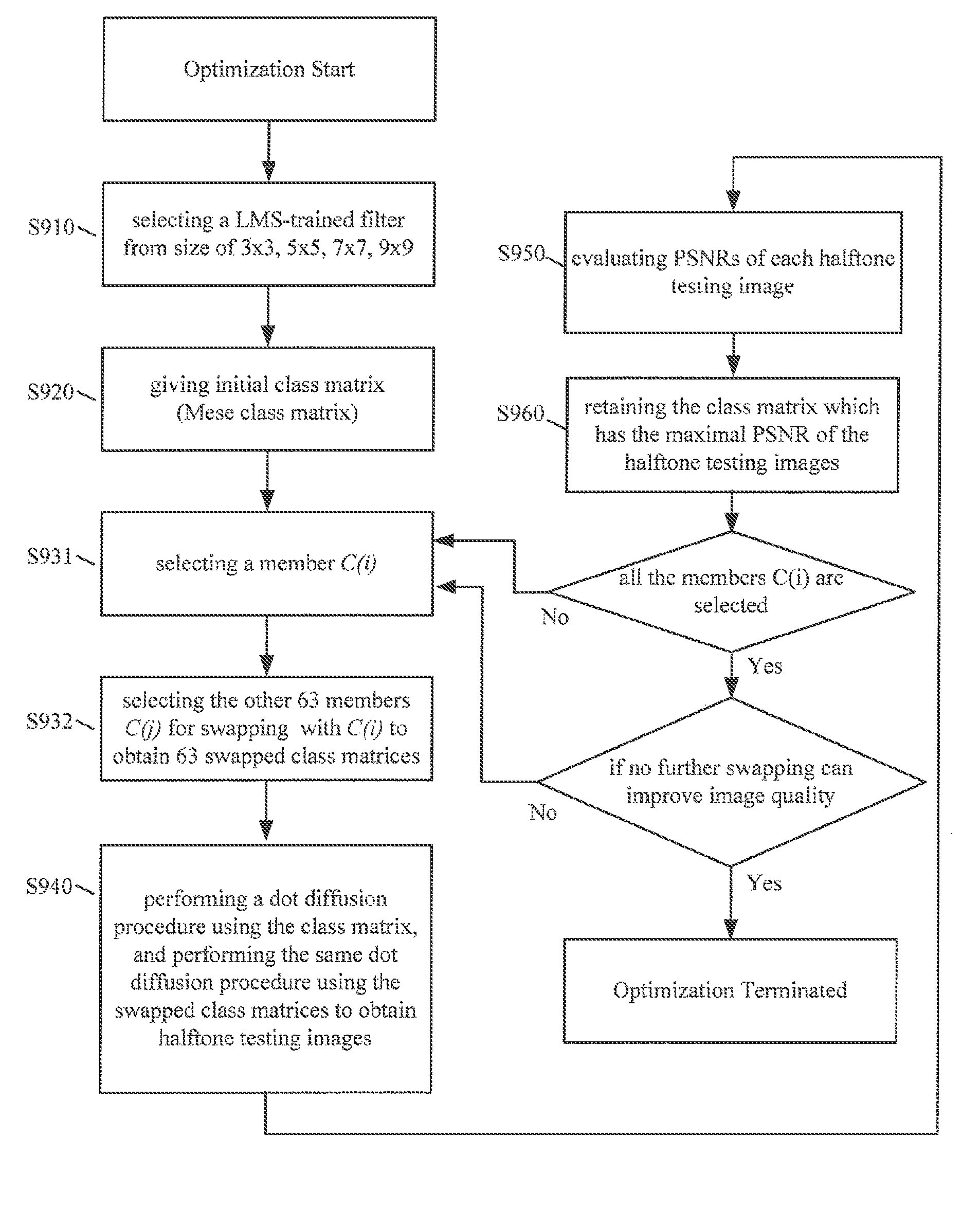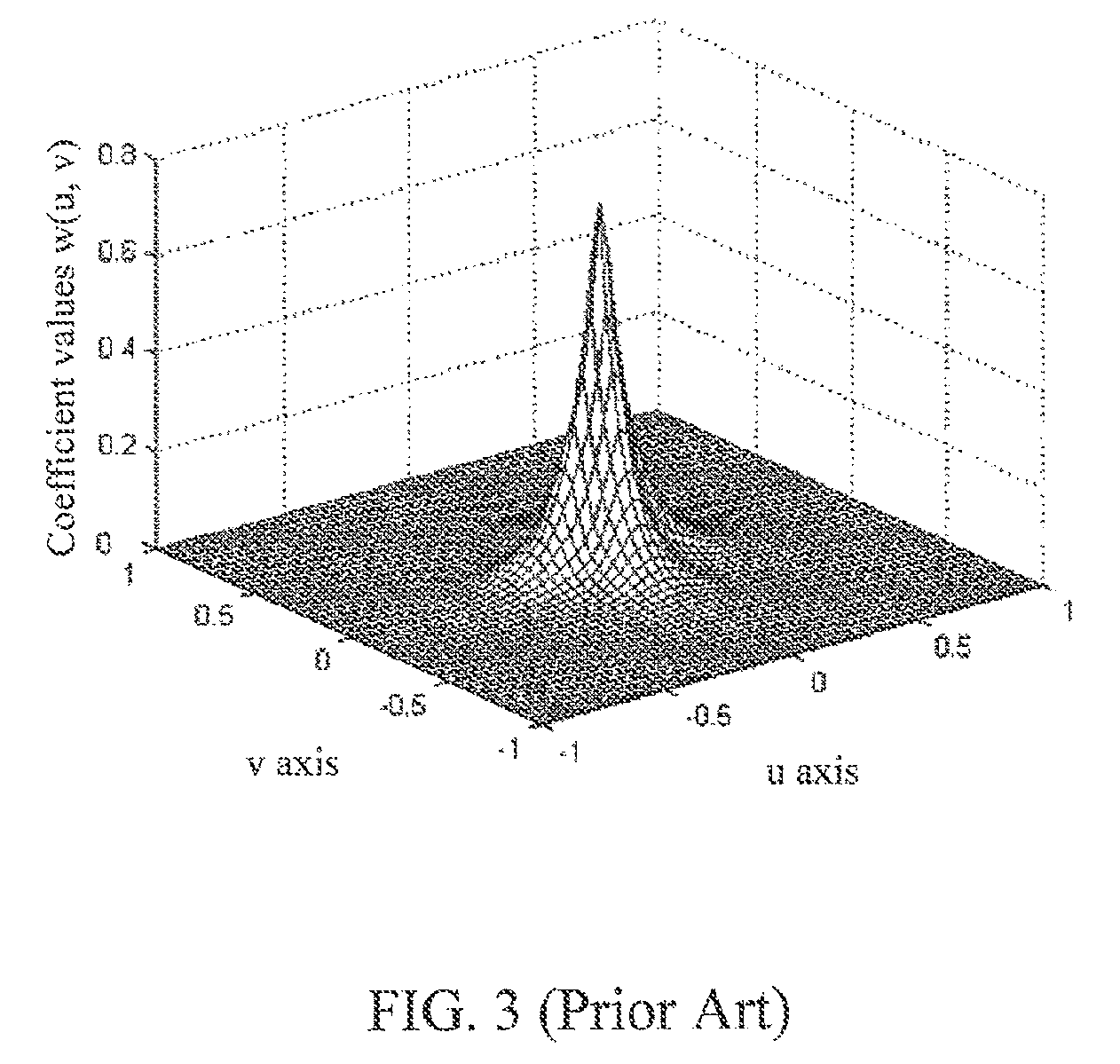Digital halftoning method utilizing diffused weighting and class matrix optimization
a technology of weighting and class matrix, applied in the field of halftoning method utilizing dot diffusion, can solve the problems of error diffusion, error diffusion, error diffusion, and dot diffusion, and achieve the effect of preserving the parallel processing advantage of dot diffusion and higher execution efficiency
- Summary
- Abstract
- Description
- Claims
- Application Information
AI Technical Summary
Benefits of technology
Problems solved by technology
Method used
Image
Examples
Embodiment Construction
[0032]Please refer to FIG. 4. An embodiment of a digital halftoning method according to the present invention will be described. First, an original image is divided into non-overlapping blocks (step (a1)). The non-overlapping blocks is left for processing in step (a4).
[0033]In step (a2), a LMS (Least-Mean-Square) filter is obtained by comparing grayscale images and corresponding halftone results of the grayscale images. Those grayscale images are used for training, and thus called training images. A corresponding halftone result of each training image is composed of binary output values, for example 0, 255, and can be obtained from various kinds of halftoning methods, for example, dot diffusion, error diffusion, ordered dithering and direct binary search (DBS). A LMS filter, which has been trained by using the training images and their halftone results, is called a LMS-trained filter. Since the LMS-trained filter has the characteristics of Human Visual System (HVS), the values insid...
PUM
 Login to View More
Login to View More Abstract
Description
Claims
Application Information
 Login to View More
Login to View More - R&D
- Intellectual Property
- Life Sciences
- Materials
- Tech Scout
- Unparalleled Data Quality
- Higher Quality Content
- 60% Fewer Hallucinations
Browse by: Latest US Patents, China's latest patents, Technical Efficacy Thesaurus, Application Domain, Technology Topic, Popular Technical Reports.
© 2025 PatSnap. All rights reserved.Legal|Privacy policy|Modern Slavery Act Transparency Statement|Sitemap|About US| Contact US: help@patsnap.com



